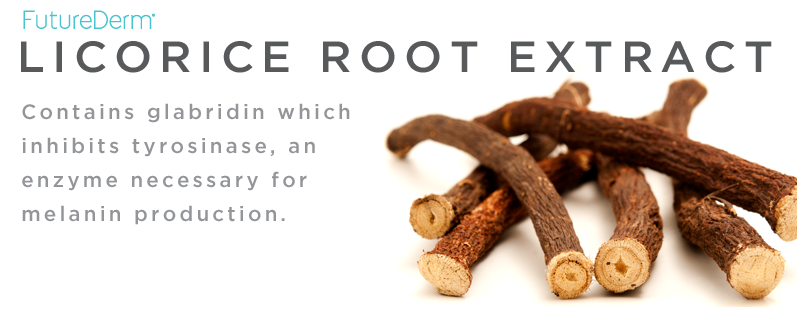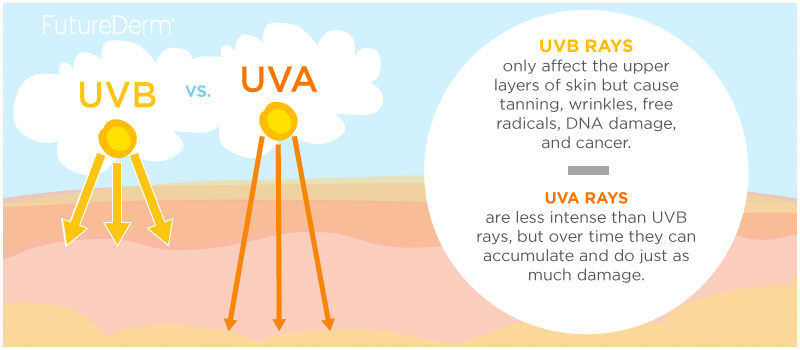By Mileena
With the rise of skin tone and pigmentation correcting products in the market, skin lightening has become part of the beauty regimen for many consumers throughout the world. Since skin lightening is a broad term that targets multiple skin conditions, the demand for a multifaceted approach is necessary. Advancements in research for skin lightening agents are ever-growing, with each breakthrough resulting in new, innovative ingredients being added to the repertoire. These ingredients target multiple underlying mechanisms of excess pigmentation, which is important because pigmentation disorders run the gamut.
All pigmentation disorders can be categorized under the umbrella term of ‘hyperpigmentation’. Hyperpigmentation refers to an excess or irregular amount of pigmentation being produced in the skin. It can affect people of all skin tones. There are 3 causes of hyperpigmentation which will be discussed in this post.
Sun Damage & Age Spots
Sun damage is an excessive exposure to the sun. It can manifest itself as uneven skin tone, blotchiness and age spots. These can commonly be visible on areas such as the face, chest and hands.
The issue with sun damage is that it is cumulative and most of it forms in our youth. Years of unprotected skin from the sun causes irregular distribution of melanin that can show up later in life. Melanin, being the skins natural defense mechanism increases when exposed to the sun. This tanning or darkening of the skin is in essence a visible damage (or imprint) to the skin.
With the advancements in research in regards to mechanisms of excess pigmentation, certain skin lightening ingredients have been shown to repair sun damaged DNA and treat age spots. These ingredients include: Tranexamic Acid & Chamomilla Extract (inhibits UVB-induced inflammation), Linoelic Acid (0.1% concentration shown to lighten UV induced hyperpigmentation), Ellagic Acid (natural occurring polyphenol that can lighten UV damaged skin at 0.5% concentration. Found in Skinceuticals Advanced Pigment Corrector).
Hydroquinone is a powerful skin lightening agent that is designed to treat localized legions of excess pigment. Concentrations at 2% have been shown to interfere with the enzyme (tyrosinase) responsible for producing melanin.
Alpha hydroxy acid peels and laser treatments are ideal options for treating sun damaged skin, as they slough off the epidermal layer (top layer), revealing a more even-toned complexion.
Vitamin C and its derivatives are excellent at lightening UV induced skin damage. Since vitamin C has powerful antioxidant properties, it also enhances the photo protective quality of sunscreen ingredients. Sunscreen in general, should be at the forefront of preventing and treating any form of hyperpigmentation.
Post-Inflammatory Hyperpigmentation & Acne Marks
Post-Inflammatory Hyperpigmentation is a result of an injury or inflammation to the skin from various conditions (acne, eczema etc.). It can affect people of all skin tones, but has a greater propensity towards darker skinned individuals.
The treatment protocol for post-inflammatory hyperpigmentation is cessation of inflammatory or irritating factors, sun protection, and lessening of excess pigment through use of skin lightening ingredients.
Several ingredients have been shown to treat post-inflammatory hyperpigmentation without contributing to further inflammation: Arbutin, Mulberry Extract, Licorice Extract, Bearberry Extract and Soy.
Niacinamide has demonstrated a lightening effect on post-inflammatory pigmented skin by inhibiting melanin transfer from melanocytes to keratinocytes. Furthermore, at 2% niacinamide was shown to reduce facial sebum production which can decrease the prevalence of acne in some individuals and in turn prevent formation of acne marks.
In a study done by Procter & Gamble, niacinamide (4%) combined with n-acetyl glucosamine (2%) was shown to have profound lightening effects on hyperpigmented skin with little to no adverse effects. This combination can be found in Paula’s Choice Resist Pure Radiance Skin Brightening Treatment.
When approaching post-inflammatory hyperpigmentation treatments in darker skinned individuals, it is vital to avoid overzealous products and procedures, as they can reinforce inflammatory responses. This is typically the case with high strength chemical peels; however lactic acid (alpha hydroxy acid) has been shown to be beneficial in treating hyperpigmentation in darker skinned individuals. Lactic Acid not only poses less irritation than glycolic acid, but has unique tyrosinase inhibiting properties.
Melasma
Melasma is an acquired skin pigmentation disorder that occurs on facial skin and has an unclear pathogenesis. Common causes can be hormonal, drug/chemical-related or UV-related. Since treatment for melasma is often long-term and challenging, a synergistic approach is quintessential.
Sunscreen should be the first line of defense in the treatment plan. Specifically, a broad spectrum sunscreen with adequate UVA and UVB protection is needed. Individuals who are sensitive to chemical sunscreens should look for sunscreens with physical sunblock ingredients like zinc oxide or titanium dioxide.
Topical skin lightening agents have shown great promise in treating melasma. Hydroquinone at 4% is an effective treatment option; however long-term use of the agent is obscure and can potentially pose a safety risk due to the cytotoxic nature of the ingredient. New alternative treatment options have developed over the years that can safely be used long-term.
Sepiwhite (Undecylenoyl phenylalanine) is an inhibitor of the melanocyte-stimulating hormone (MSH). Since melasma is often rooted in hormonal fluctuations and imbalances, Sepiwhite is star ingredient in the treatment of melasma. In a 2009 study, 1% Sepiwhite combined with 5% niacinamide demonstrated a synergistic effect (as opposed to using 5% niacinamide on its own) on melasma legions over an 8 week treatment period. The combination of niacinamide and sepiwhite can be found in ISOMERS Mega-Bright Dark Spot Formula.
For resistant and recurring melasma, studies point to an aggressive triple topical therapy as the best solution. This 3-part treatment plan consists of 4% hydroquinone, 0.05% tretinoin, 0.01% fluocinolone acetonide (topical corticosteroid) and has been shown to produce a complete or near complete resolution of melasma over 8 weeks. The study also showed continued efficacy with no adverse effects for up to a year.
The complexity of underlying mechanisms for excess melanin is the greatest challenge in the treatment of hyperpigmentation. Studies show that sun protection, combined with intercepting multiple points of melanogenesis through synergistic and non-irritating methods is the best approach. The emergence of new pathways and therapies will only continue to create greater options for consumers.
About:
Mileena is a blogger and the owner of the site, All About Skin Lightening (www.allaboutskinlightening.net) A skincare blog that focuses on pigmentation concerns. It features the latest information on skin lightening products in the market, reviews, tips and articles.






